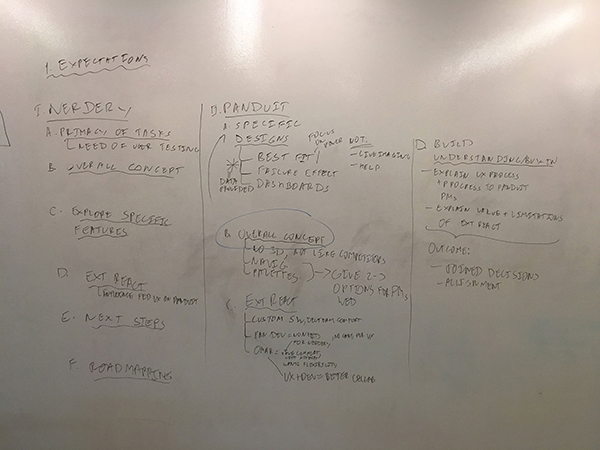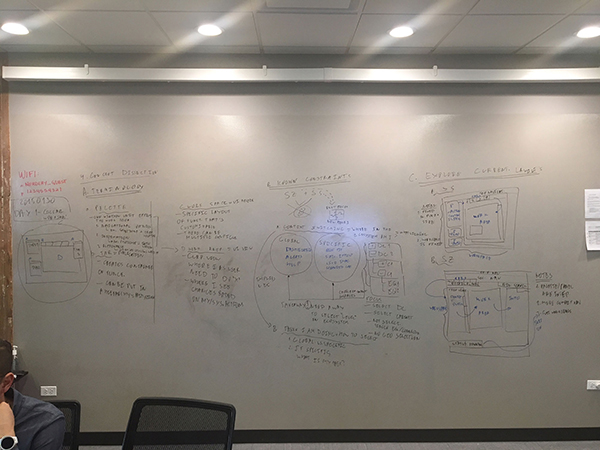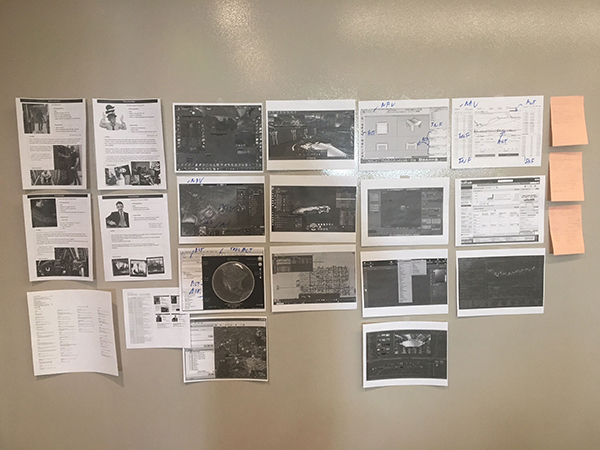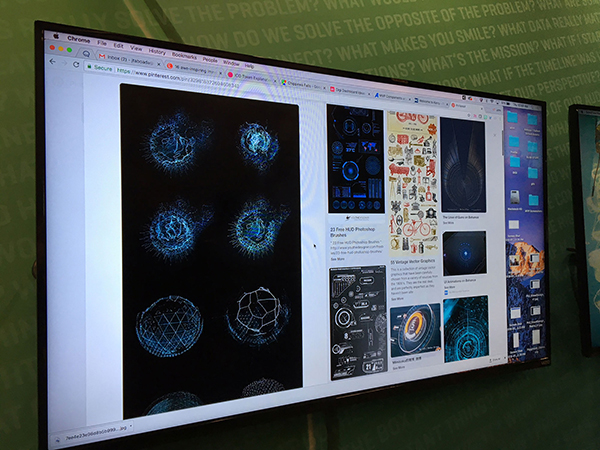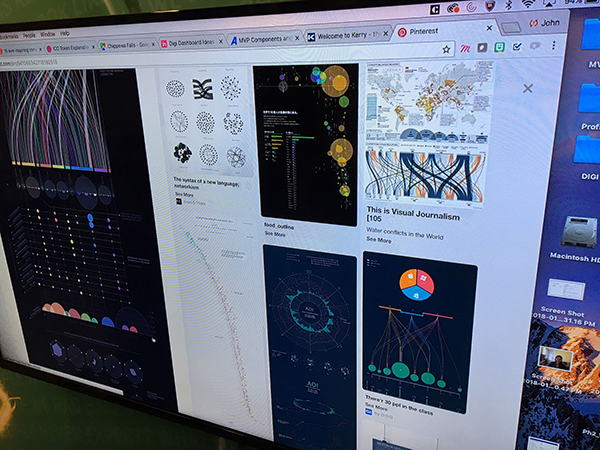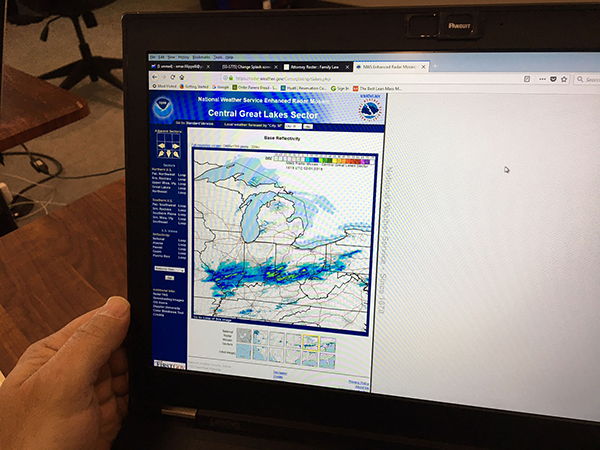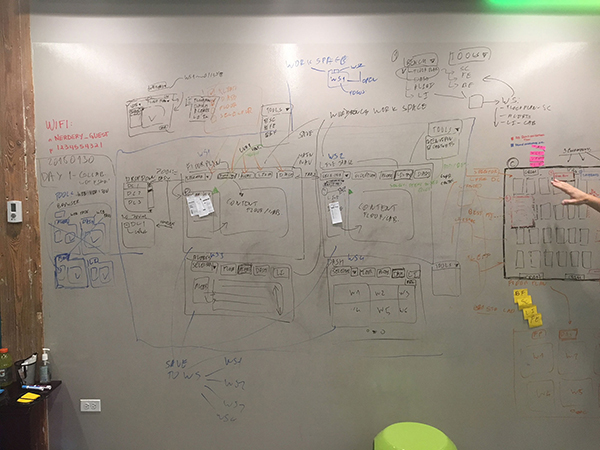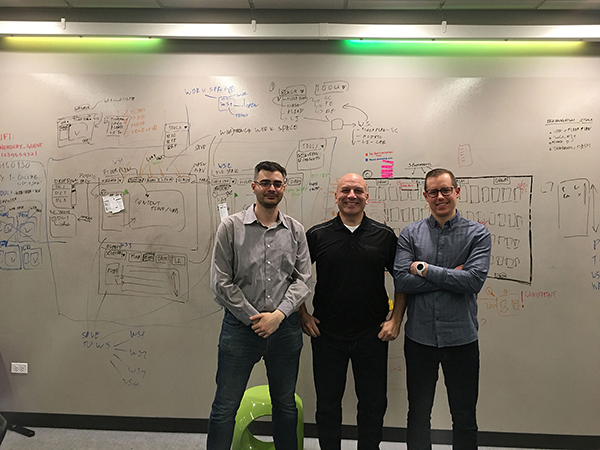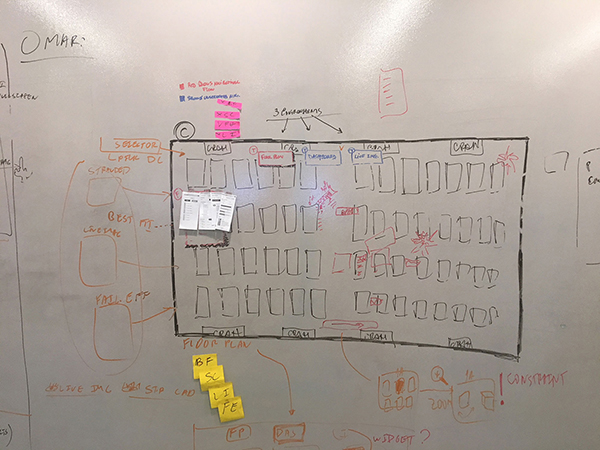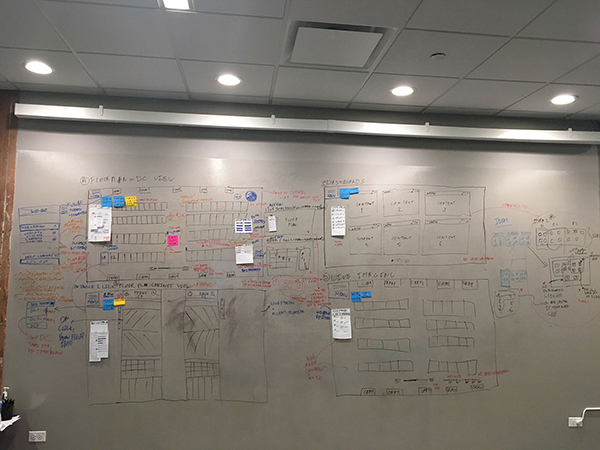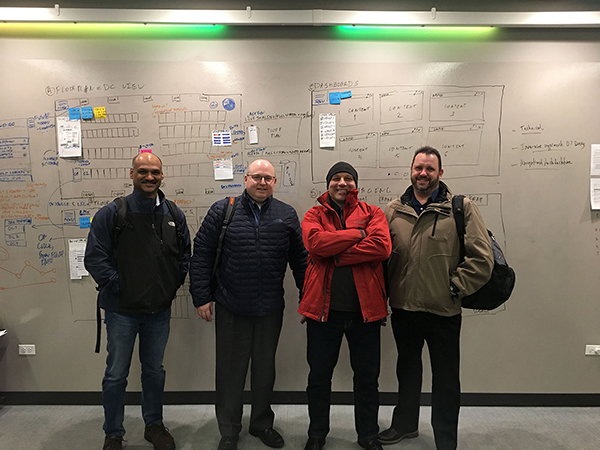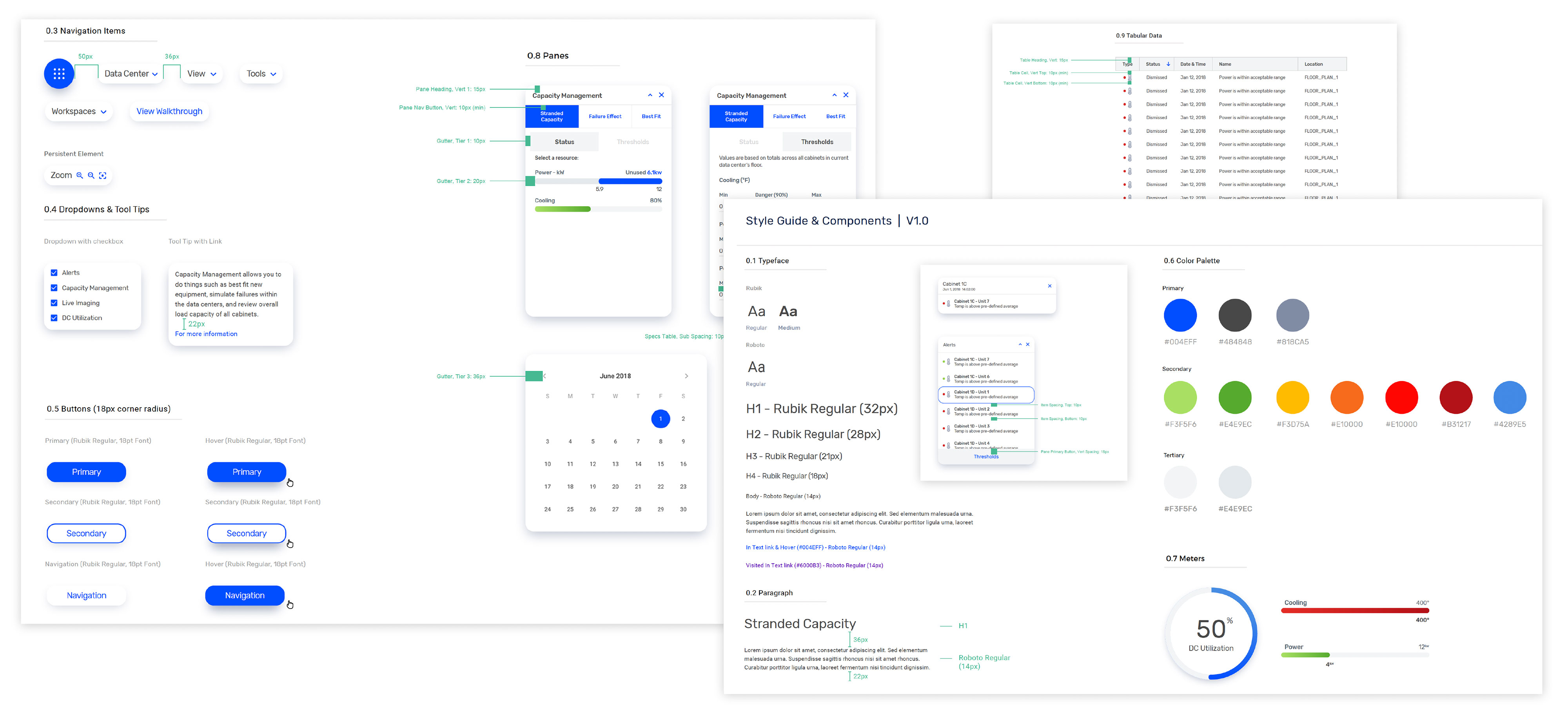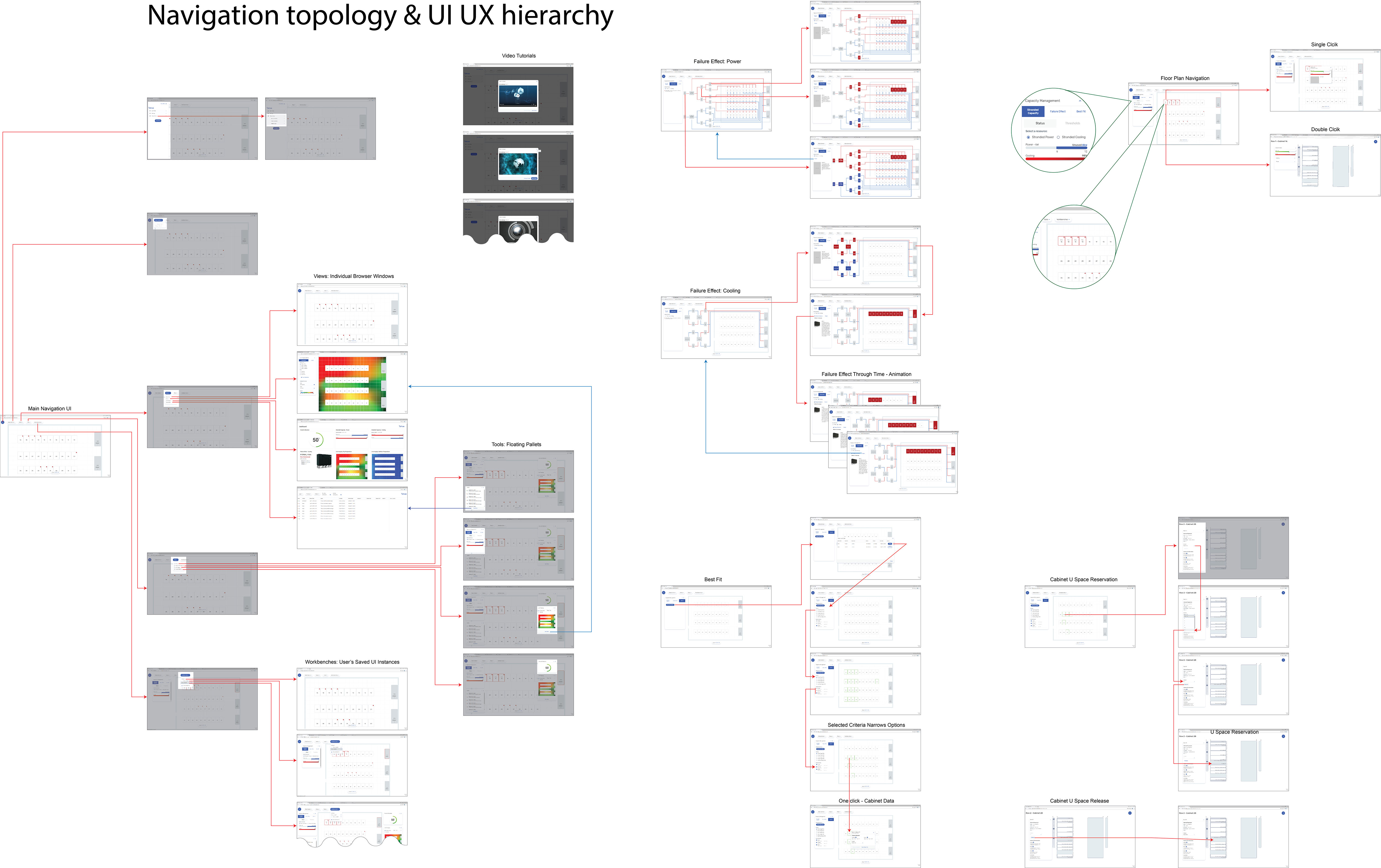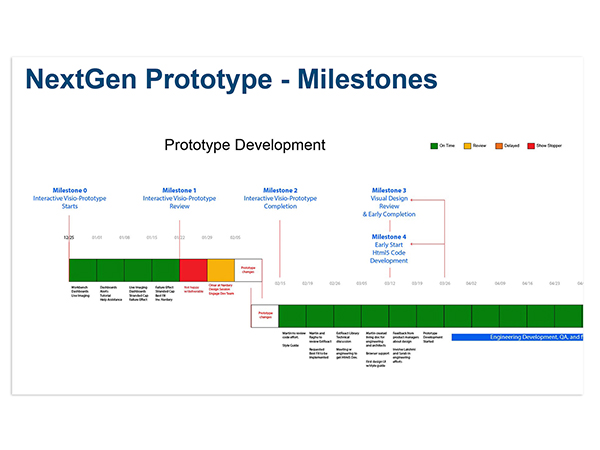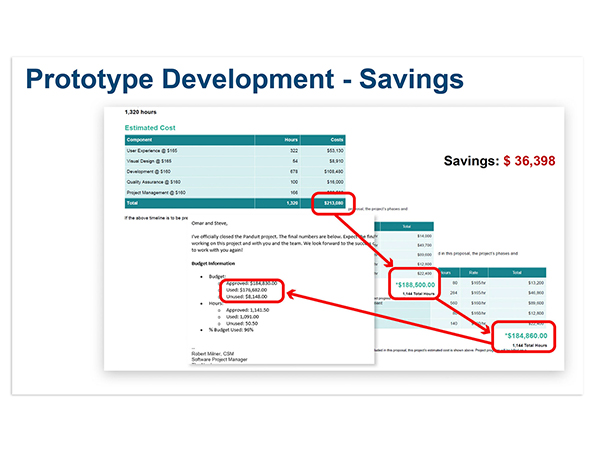Development
Key success factors: Onboarding vendor to domain. Involving engineering architects and UI developers early in the process. And choosing the right development technology (REACT).
Onboarding Nerdery
The onboarding process took several meetings. The first discussion happen at a discovery stage where the project and user personas were explained. I showed a detail navigation and features sets using the tested wireframe. Second, we had a session to explain industry details and domain. Lastly, we discussed the scope of the project plus some of the internal politics and constraints within our organization.
Ideation Workshop
After the initial onboarding Nerdery started the prototype development as they saw it fit. I attended their scrum meetings and oversaw the progress without micromanaging. I considered them experts and gave them about 4 weeks to show me their approach. At the 4 weeks mark, not satisfied with the project development, I flew to Chicago (Nerdery headquarters), and started a series of ideation meetings that lasted for about a week. This was a very effective and accelerating exercise. Not only we solved a few complex design issues but we were able to speed up the development process by cutting all 'Visio' development and focused on building the UI in HTML/CSS using REACT components.
The Prototype
The design strength for this prototype became obvious when we ran several tests with data center operators and managers. The usability bar has been set so low by our products and that of the competition that unanimously, every user, agreed that this design was superior, more intuitive, and easier to navigate than anything they have used before. But I wanted to leapfrog the competition and make sure we were addressing the future needs of our customers. We wanted to provide relevant, actionable data, by creating improved algorithms, enabling computing technology, and a new design architecture. This combination of design and technologies was to accelerate and optimize users’ data retrieval processes and decision-making. The prototype design allowed for multiple working sessions to be run simultaneously. Users had the freedom to create their own workbenches, with the flexibility to drag and rearrange all UI tools according to their specific needs. I also included a set of floating pallets. This are small units of functionality contained within floating popups. Which provided specific data access and user interaction. We use a smart set of algorithms to perform more calculations, reducing user work while giving them access to timely, more accurate data. Helping users prevent power failures and improving utilization of internal resources such as power, environmental measurements, and connectivity capacities. All of which improved users decision making to decrease operators’ expenses and prevented revenue loss.
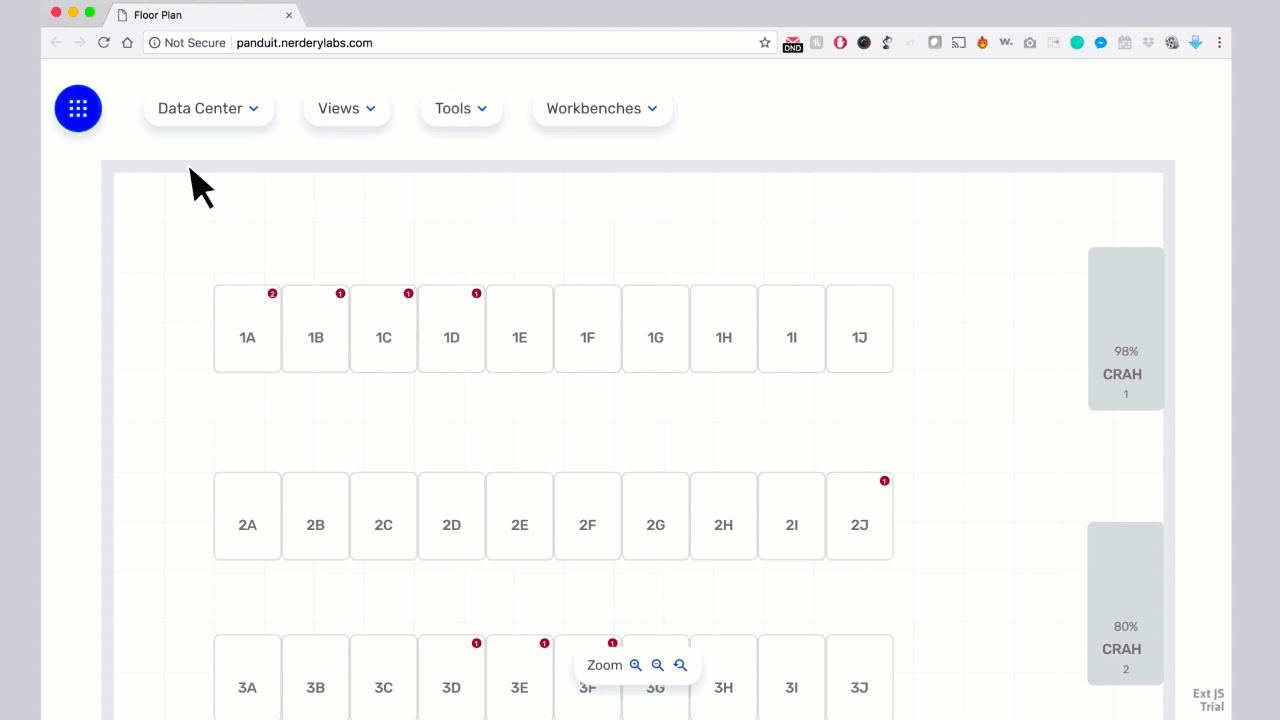
Design System
This design system was created to enable developers in US and Romania to have easy access to design components, style guides, and UI specifications, and it acted as a central design repository. The design approach includes a minimalist pattern, using a branded color to guide the users navigational path and set of secondary colors to highlight important actionable data. I stripped the design from all unnecessary graphical elements and redundant data. And focused the architecture to the specific chunks of actionable-data and key affordances needed, for user to perform the specific tasks successfully.
Prototype Topology
For our internal engineering team and PMs I created a full navigational spread, containing an eagle-view of all product pages and feature interactions. A larger version of this document also includes, marketing, purchase decision-making, payment, and product commissioning.
Timeline & Costs Savings
The project was completed within the contracted time, even though we added a few new features and data points. Also, the final cost included a total saving of $36,000. These savings were a direct result of my management style. The Nerdery agency was fantastic in allowing me to change assigned resources and manipulate the project according to our changing needs.
